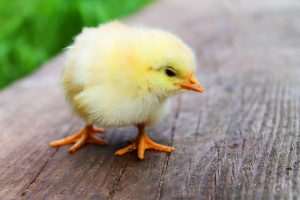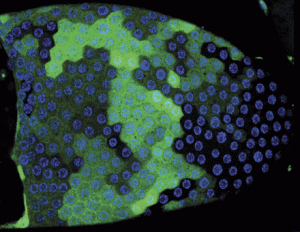Enter your address to receive notifications about new posts to your email.
Science & Publishing
-
Science & Publishing
Brighter GFP gets the green light
Off the coast of North America drifts a jellyfish that has unknowingly revolutionized molecular biology. Aequorea victoria produces green fluorescent protein (GFP), a substance that adds a green tinge to the jelly’s bioluminescence, which can sometimes be seen around its margins. By inserting a slightly modified version of the GFP gene into the genomes of…
-
Science & Publishing
New in G3: a beaver genome, some sparkling yeast, and neon proteins
Check out the February issue of G3! Table of Contents Genome Report Genome Report: Identification and Validation of Antigenic Proteins from Pajaroellobacter abortibovis Using De Novo Genome Sequence Assembly and Reverse Vaccinology Bryan T. Welly, Michael R. Miller, Jeffrey L. Stott, Myra T. Blanchard, Alma D. Islas-Trejo, Sean M. O’Rourke, Amy E. Young, Juan F.…
-
Science & Publishing
Behind the cover: Oh Canada!
February marks the launch of a crisp new look and improved navigation at the G3 website. Go check it out; we’re very proud of the design! We are also unveiling a new cover layout that allows the art submitted by our authors to shine. This month’s cover celebrates the first published genome assembly of the Canadian…
-
Science & Publishing
February GENETICS Highlights
Check out the February issue of GENETICS by looking at the highlights or the full table of contents! ISSUE HIGHLIGHTS Feeding-related traits are affected by dosage of the foraging gene in Drosophila melanogaster, pp. 761-773 Aaron M. Allen, Ina Anreiter, Megan C. Neville, and Marla B. Sokolowski The foraging gene has been implicated in multiple feeding-related traits. Allen…
-
Science & Publishing
In the Year of the Rooster, a new chicken genome assembly is hatched
The chicken is one of humanity’s closest and oldest allies. With a worldwide population in the billions, this former jungle fowl is one of the most important domesticated animals on Earth. In the February issue of G3, Warren et al. further our understanding of this familiar bird, presenting a new and substantially improved chicken genome assembly…
-
Science & Publishing
Beyond stressed-out: the hypoxic response
Deep within a tumor, sequestered from an adequate blood supply, a cancer cell grows and multiplies. Far beneath Earth’s surface, a microbe lives and thrives in similarly low-oxygen conditions. Generally, oxygen depletion causes serious distress to aerobic organisms—what allows these life forms to survive? The cellular response to hypoxia is massive. Hypoxia alters the expression…
-
Science & Publishing
Pathogenic yeast uniquely resists toxicity of aggregation-prone proteins
Misfolded proteins can be so toxic that they cause cell death. At least nine neurodegenerative disorders are caused by misfolded proteins with expanded stretches of glutamine residues (polyQ tracts), including the invariably fatal Huntington’s disease. But some organisms are resistant to the harmful effects of these proteins. In the January issue of G3, Leach et…
-
Science & Publishing
A modern look at ancient DNA
Well over 15,000 years ago, a man and a bear died in a cave in the Jura Mountains in modern-day Switzerland. That was the end of the story for millennia—until their remains were discovered in 1954 by researchers investigating the cave. Further work in the 1990s uncovered the fact that the man had, in fact,…
-
Science & Publishing
Enhancer-promoter distance is a potent modulator of gene expression
To boost transcription of a target gene, enhancer sequences must make contact with the gene’s promoter. This crucial meeting is mediated by interacting proteins and the formation of chromatin loops that bring distant enhancers and promoters together. Although it’s clear that enhancers increase transcription this way, the primary mechanisms by which an enhancer’s target genes…
-
Science & Publishing
New in G3: chicken genome assembly, Drosophila co-CRISPR, and more
Check out the January issue of G3! Table of Contents Investigations The CgHaa1-Regulon Mediates Response and Tolerance to Acetic Acid Stress in the Human Pathogen Candida glabrata Ruben T. Bernardo, Diana V. Cunha, Can Wang, Leonel Pereira, Sónia Silva, Sara B. Salazar, Markus S. Schröder, Michiyo Okamoto, Azusa Takahashi-Nakaguchi, Hiroji Chibana, Toshihiro Aoyama, Isabel Sá-Correia,…
-
Science & Publishing
January GENETICS Highlights
Check out the January issue of GENETICS by looking at the highlights or the full table of contents! ISSUE HIGHLIGHTS This Month’s Centennial Articles The sustained impact of model organisms—in genetics and epigenetics, pp. 1-4 Nancy M. Bonini and Shelley L. Berger In this GENETICS Centennial commentary, Nancy M. Bonini and Shelley L. Berger reflect on the history of…


![By Jim G from Silicon Valley, CA, USA [CC BY 2.0], via Wikimedia Commons](https://s36063.pcdn.co/wp-content/uploads/2017/02/dsc26476-_crystal_jelly_-aequ-300x225.jpg)






![By Kelvinsong (Own work) [CC BY 3.0], via Wikimedia Commons. (Modified)](https://s36063.pcdn.co/wp-content/uploads/2017/01/rsz_transcription_factors-300x163.png)

